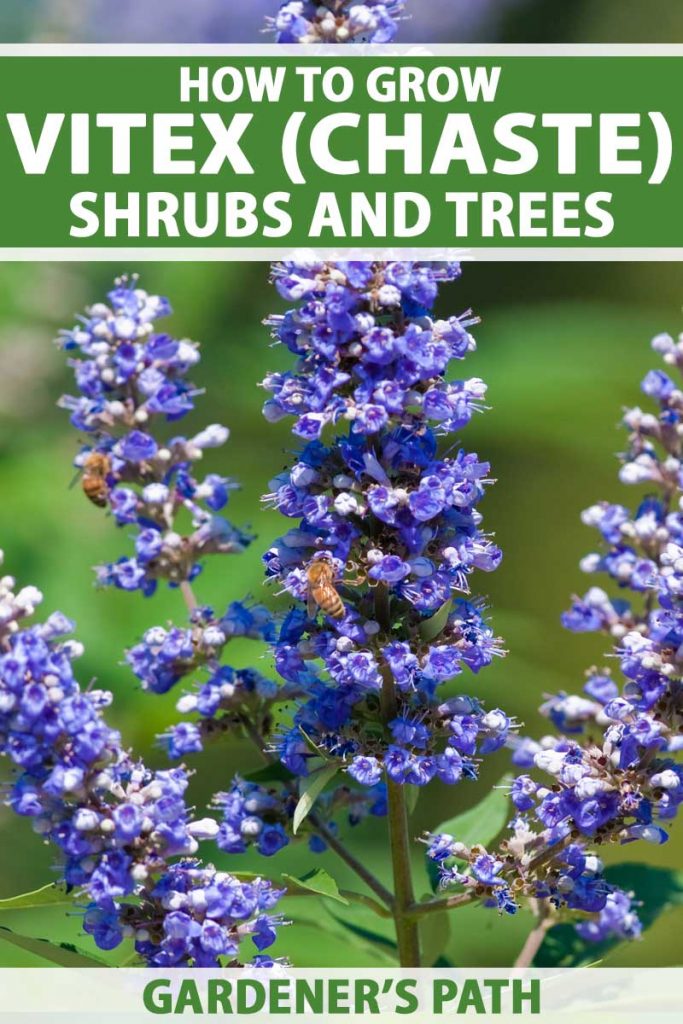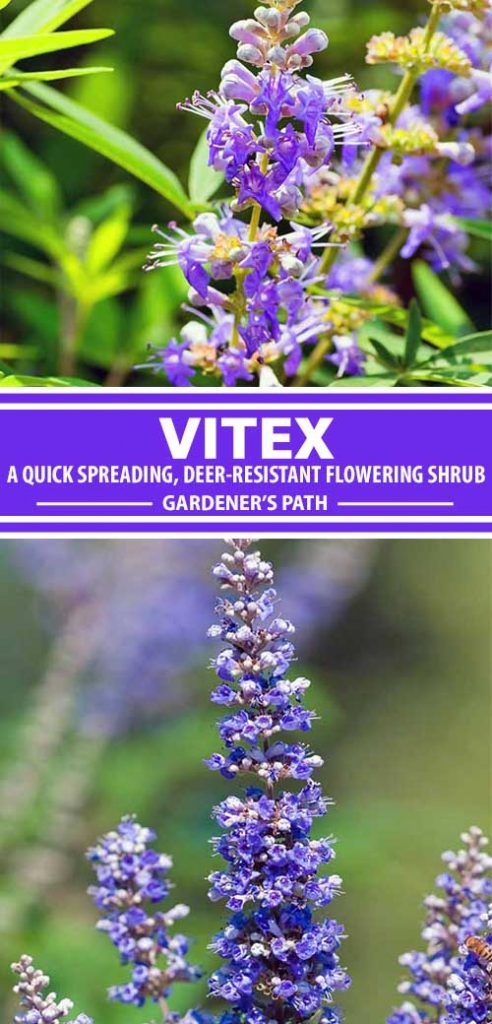Vitex agnus-castus
I very much appreciate plants that straddle the line between tree and shrub, especially when they do it in style.
The chaste tree is one such plant, and one that deserves some serious hyping up.
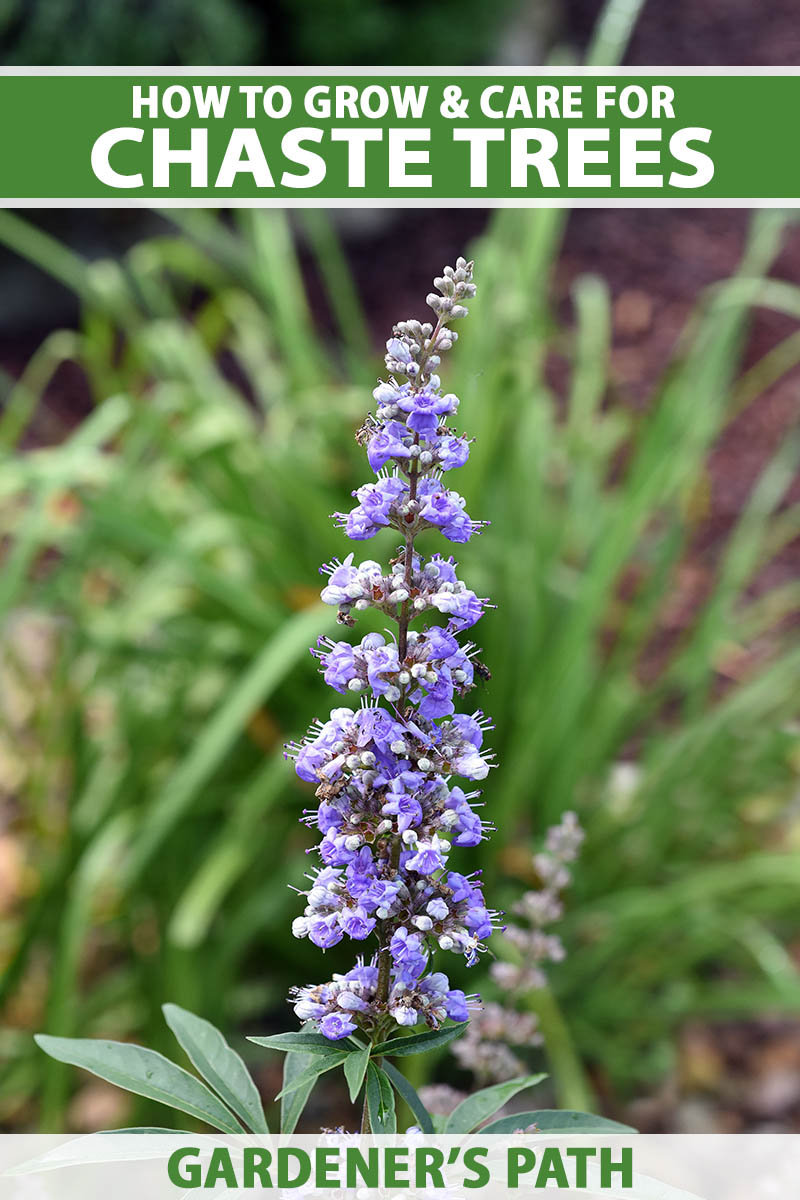
We link to vendors to help you find relevant products. If you buy from one of our links, we may earn a commission.
With beautiful spikes of colorful blooms, lovely leaves, and a delightful aroma, Vitex agnus-castus is an amazing specimen for attracting pollinators to your garden.
It’s no dainty pushover, though – it boasts tolerance for drought, heat, and overall cultural neglect, not to mention a very vigorous growth rate.
But optimal care will take your chaste tree much further than just providing the bare minimum.
In this guide, we’ll go over everything a gardener needs to provide for their V. agnus-castus to end up with an ornamentally and physiologically rockin’ chaste tree.
Plus, I’m sure you’re curious as to why the plant is even called “chaste tree.” Well, don’t you worry. We’ll dive into that, too.
What Are Chaste Trees?
V. agnus-castus originates from southern Europe and western Asia, and has since naturalized throughout Europe and the southern United States.

Hardy in USDA Zones 6 to 9, the chaste tree is a member of the Lamiaceae family of mint plants, and is known by many different names.
“Lilac chaste tree,” “sage plant,” “hemp tree,” “Indian spice vitex,” “monk’s pepper,” and simply “vitex” are but a few.
If left to its own devices, V. agnus-castus has an upright branching and rounded form, and it often reaches heights of eight to 20 feet and spreads of five to 20 feet.
These dimensions can be kept in check via pruning to yield a multi-stemmed shrub or a small, single-trunked tree.
The grayish-green, deciduous, and oppositely-arranged leaves of this plant are palmately compound, with five to seven leaflets growing from a central point.
Each aromatic leaflet is elliptical to lance-shaped, and can reach lengths of five to six inches.
When the deciduous leaves eventually drop, they do so without flaunting impressive fall color beforehand.

Come summer, light blue to purple flowers bloom in tall and skinny clusters, with each cluster growing up to a foot tall. These aromatic blooms are quite attractive to pollinators such as hummingbirds, bees, and butterflies.
After pollination, the flowers give way to small, dark, peppercorn-like drupes in fall, each containing one to four seeds.
This plant can liberally re-seed, which, when combined with the vigorous growth rate, gives this plant potentially invasive growing tendencies.
Always check the rules and regulations of your local area before planting these in your landscape!
Cultivation and History
We gotta touch on the “chaste tree” and “monk’s pepper” nicknames in more detail, as you’re probably wondering what the deal is with the abstinence theme here.
Well, those names came about due to the belief that V. agnus-castus could help with maintaining one’s chastity.
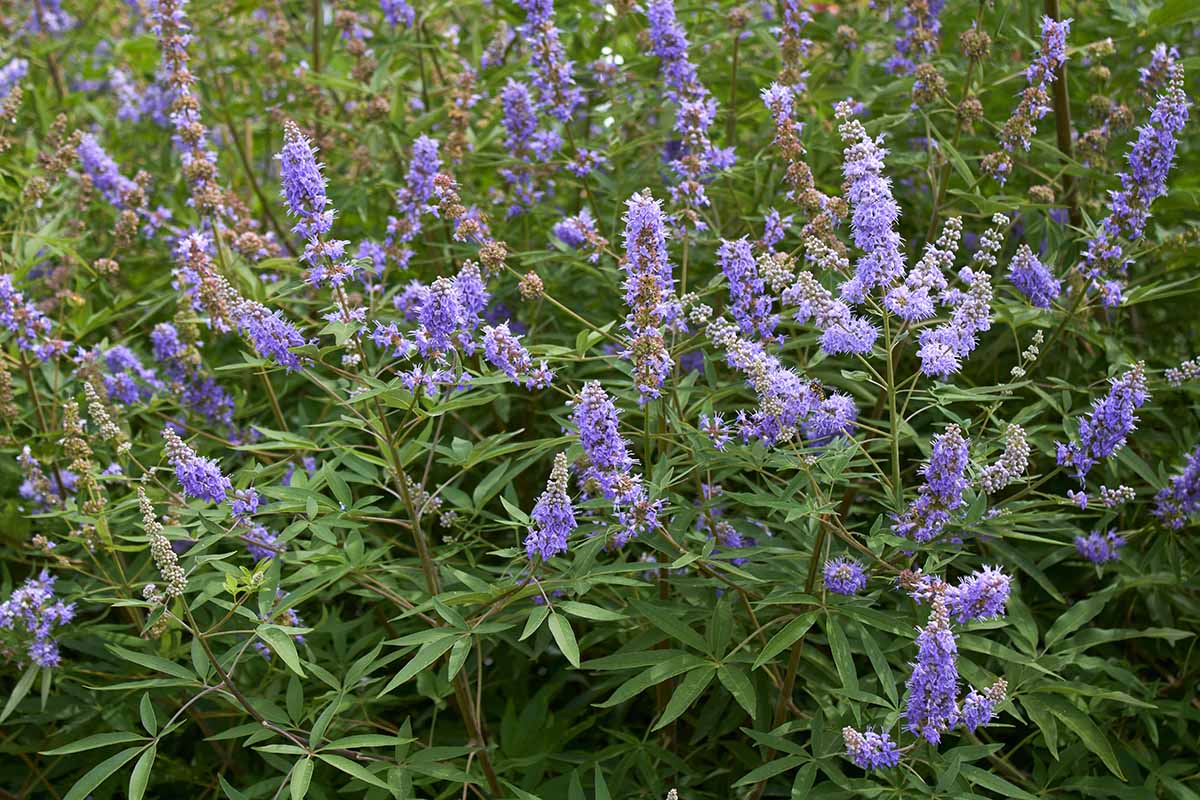
In his text “Naturalis Historia,” Roman naturalist Pliny the Elder noted that in Ancient Greek times, Athenian women would keep the strong-smelling leaves in or around their beds to help keep them chaste during Thesmophoria, a multi-day festival held in honor of Demeter, the Greek goddess of agriculture.
Medical greats of antiquity like Hyppocrates and Dioscorides recommended that it could treat inflammation.
Fast-forward to the time of the Roman Empire, and you’d find wives using the foliage to hinder their husbands’ libidos.
This belief in the chastity-conducting powers of V. agnus-castus carried over into medieval times, as monks believed the plant could suppress those unholy urges.
They’d chew the berries, add them to their meals, and even carry them around in their pockets. Hence, the “monk’s pepper” moniker.
Besides the plant’s supposed strength in combating randiness, there are a few other purported benefits of the chaste tree.
Various cultures of old used it to treat a grab bag of ailments, from gastrointestinal issues to snake and spider bites, to made up psychological conditions such as hysteria!
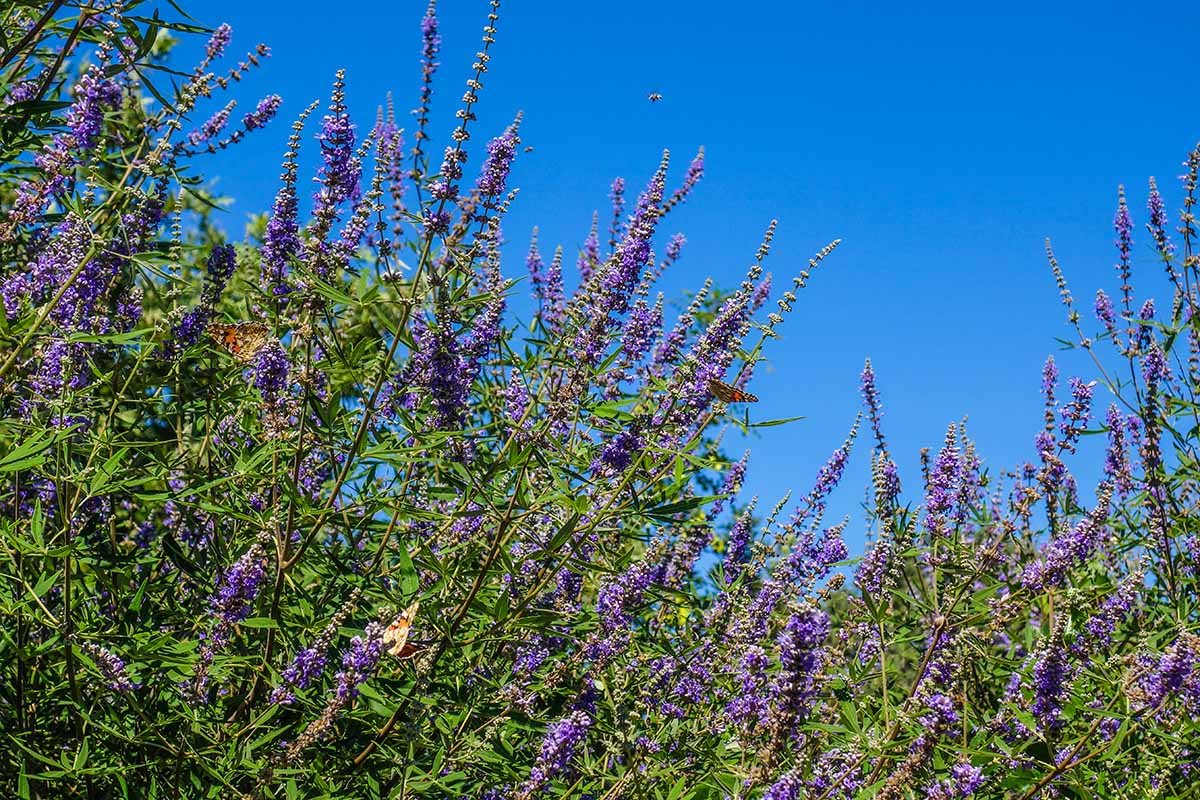
Traditional North American and European herbalists claim it can be used to combat infertility, menstrual irregularities, and acne.
Nowadays, V. agnus-castus is mostly utilized in relieving the associated symptoms of premenstrual syndrome, such as hot flashes, cramping, and mood fluctuations.
Limited scientific evidence has been shown to date for applications outside of PMS relief, despite the various ways it’s been used historically.
Propagation
If you want to grow a chaste tree for yourself, you’ll need to start one from seed, propagate a cutting, or transplant a juvenile specimen.
From Seed
To acquire some V. agnus-castus seeds, you’ll need to either purchase them or extract them from ripened fruits in fall. Once you have the seeds, soak them in water for 24 hours.
After soaking your seeds, you’ll need to cold-stratify them. Place your seeds in a baggie filled with moist sand, then place the baggie in the refrigerator for at least 90 days.
During this time, regularly check the bag and maintain moisture.
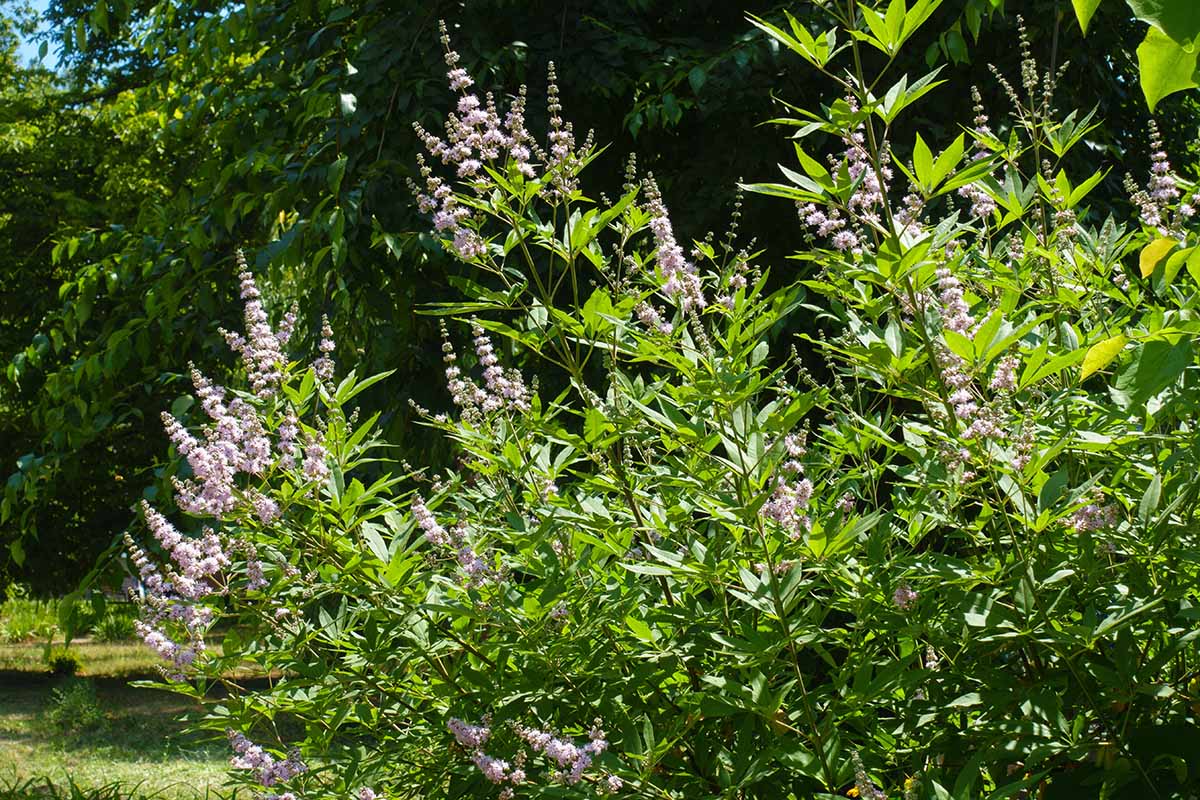
Once three months or so are up, take the baggie out of the fridge, remove the seeds, and sow them just below the surface of a suitable seed-starting medium, such as a 50:50 mix of peat moss and perlite.
Container-wise, you can opt for a seed tray or individual three-inch containers, whatever floats your boat. If you choose the seed tray, space the seeds an inch or two apart.
Place your containers near a sunny window, where they’ll be exposed to bright, indirect light. Moisten the media, and keep it moist as the radicles sprout.
Seedlings should emerge within two weeks.
Continue to care for the seedlings, repotting as needed to provide their root systems with at least an inch of elbow room on all sides, and maintaining soil moisture.
Once the final frost passes in spring, the seedlings should be hardened off outdoors.

To do this, leave the seedlings outside for 30 to 60 minutes before bringing them back inside.
Add an additional 30 to 60 minutes each successive day until the seedlings can withstand a full day outside.
Now, they’re ready for transplanting!
From Cuttings
Propagating cuttings is ideal for when you want a perfect genetic clone of your parent plant.
To get started, use a sharp and sterile blade to cut a four- to six-inch softwood cutting from a plant in late spring or early summer.
It’s important that you choose a piece of stem that’s neither brand new, nor fully mature.

You can determine this by bending a stem. If it breaks with a snap, bingo! That’s softwood.
If it bends but does not break, that section is too immature. If the stem doesn’t bend at all, it is hardwood, and therefore not suitable for propagation.
Make sure the end of your propagation piece is cleanly cut. Remove the leaves from the lower half, and then dip the cut end in rooting hormone – either liquid or powder.
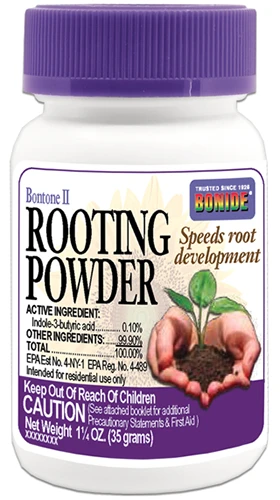
Bonide Rooting Powder
For a powdered IBA root hormone, check out this product from Bonide, available via Arbico Organics.
Prepare a well-draining, three-inch container filled with a 50:50 mix of peat moss and perlite, stick the cut end in, then moisten the media.
Cover with a clear plastic bag or a plastic dome, then place the container in bright, indirect light to create a miniature greenhouse.
Check the cutting daily, adding a bit of water if the potting mix feels dry.
After four to six weeks have passed, check for roots by either seeing if any are peeking out of the holes in the bottom of the container, or gently lifting the plant out of the container.
Once you see roots, transfer the cutting into a larger container, and keep the medium moist. Do not replace the plastic humidity dome.
If everything goes to plan, rooted cuttings should be ready for transplanting after the final frost the following spring. Make sure to harden them off following the above protocol!
From Seedlings/Transplanting
The best time for transplanting is in spring, after the final frost… although fall is also an acceptable time.
When choosing spots for transplanting, select well-draining sites that are situated in full sun. Space these sites as far apart as you expect your transplants to spread at maturity.

Dig holes that are about as deep as and a bit wider than the transplants’ root systems. Remove the transplants from their containers and lower their root systems into their respective holes.
Work a bit of compost or well-rotted manure into the dug-out soil, then begin to backfill the holes. Alternate backfilling with watering until you’re left with fully backfilled, fully-watered transplants.
Keep the soil around the transplants moist throughout their first growing season.
How to Grow
’Tis growing time, boys and girls! Let’s learn how to keep a chaste tree alive and kicking.
Climate and Exposure Needs
As mentioned earlier, V. agnus-castus needs to be grown in USDA Hardiness Zones 6 to 9 to survive year after year as a perennial.
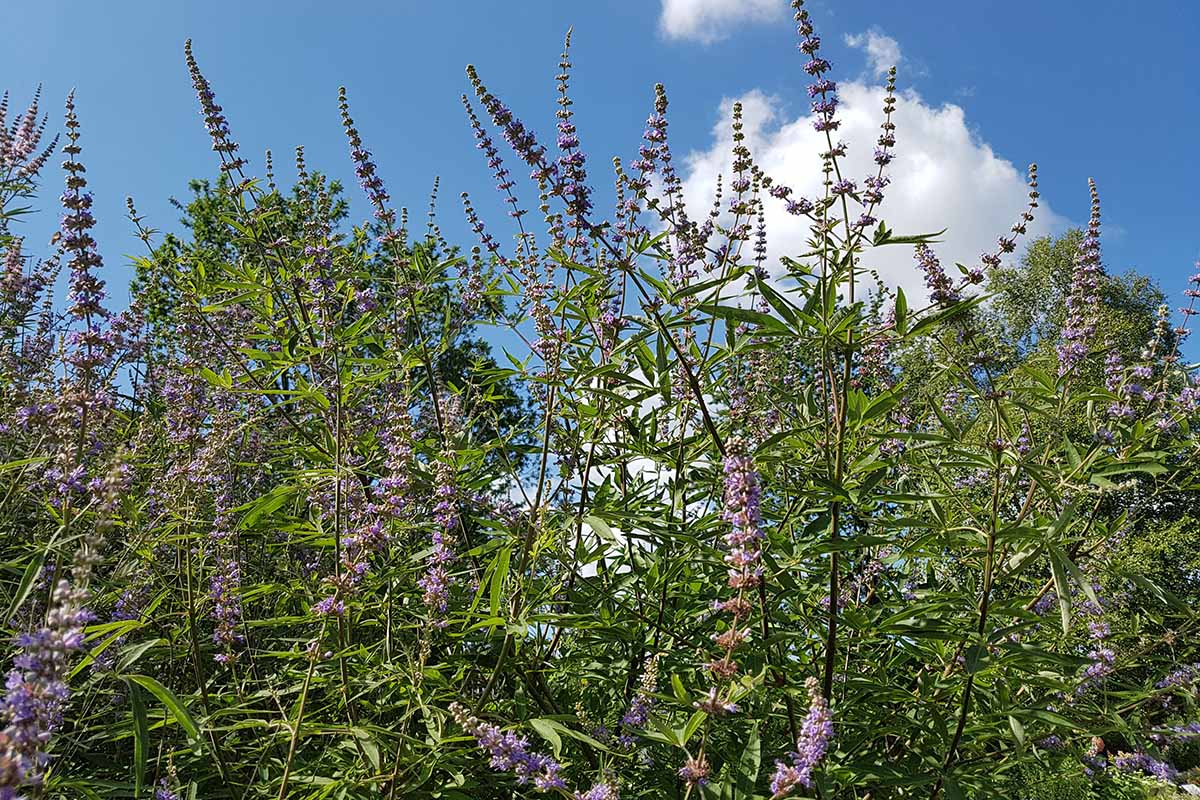
In Zone 6, the plant may die back to the ground in winter, but it’ll bounce back come spring.
Chaste trees are big fans of full sun, so make sure that they’re in a position to soak up all the rays that they possibly can!
Soil Needs
Well-draining soils are essential, as a lack of drainage can easily lead to root rot. A loamy and friable soil is preferable, but these plants can handle clayey or sandy textures, if necessary.
Same goes for pH. A typical range of 6.0 to 7.0 is best, but slightly more acidic or basic soils will work as well.
Water and Fertilizer Needs
In many cases, a chaste tree can survive without any supplemental irrigation, save for during severe droughts.
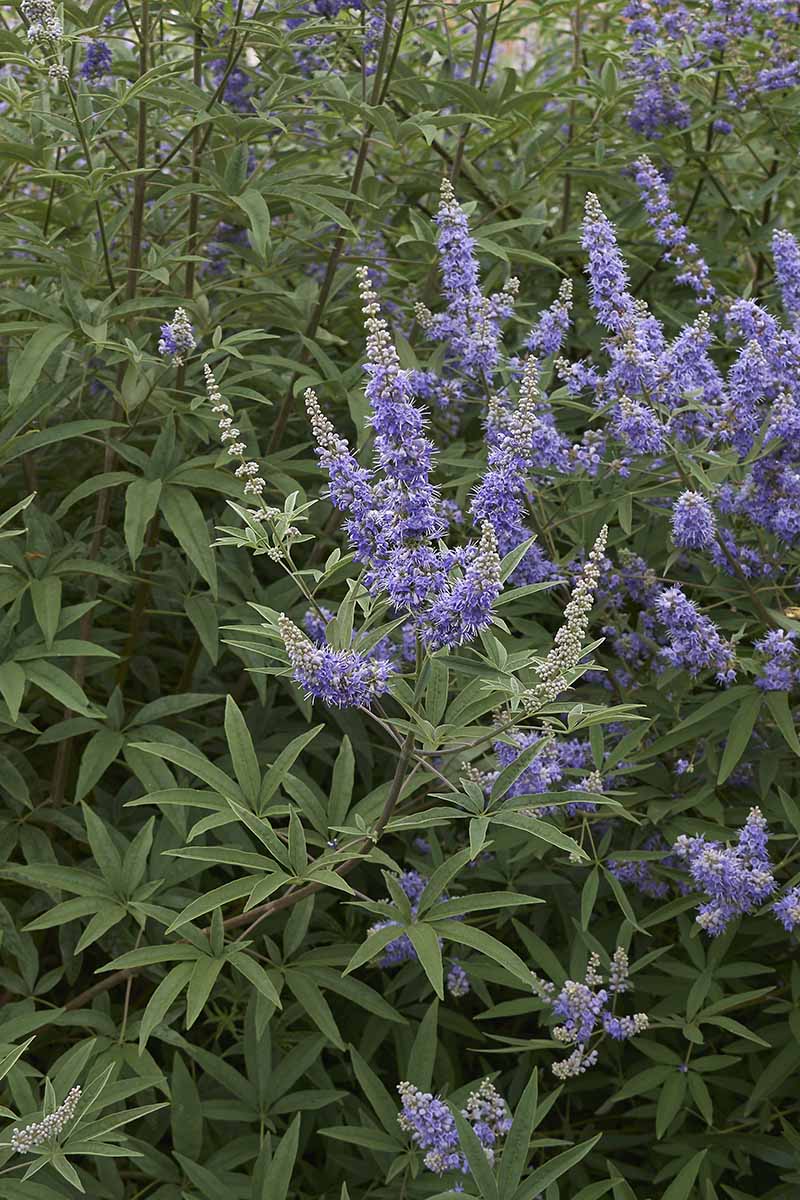
For optimal growth and flowering, you should water these plants deeply whenever the soil around their roots dries out completely.
But if you don’t, it’s not the end of the world – these plants can survive moderate drought once established.
If your V. agnus-castus looks like it needs a little pick-me-up, give it a dose of 10-10-10 NPK fertilizer in early spring and again in early summer.
Growing Tips
- Make sure to provide a full sun location.
- Ensure that the soil is well draining.
- Water whenever the root zone is completely dry.
Pruning and Maintenance
Before the flush of new growth each spring, you can prune as you’d like for shape, whether the shape is that of a full shrub, or more tree-like.
If you’re having a hard time keeping your shrubs to a manageable size, feel free to cut them down to the ground in winter – they should bounce back come spring.

Be on the lookout for dead, dying, and/or diseased foliage year-round, which should all be promptly removed.
Cutting off spent blooms as you notice them will encourage quick re-blooming.
If you don’t deadhead by cutting the spent blooms off, the plant will form attractive berries, which contain seeds that are more than happy to make more vitex plants wherever they fall.
Maintaining a couple inches of mulch around the crown of these plants will do wonders for suppressing weeds, retaining water, and protecting the roots from damage.
Cultivars to Select
Slight twists on old favorites are usually a good time. Exhibit A: white cheddar Cheez-Its. Exhibit B: chaste tree varieties!
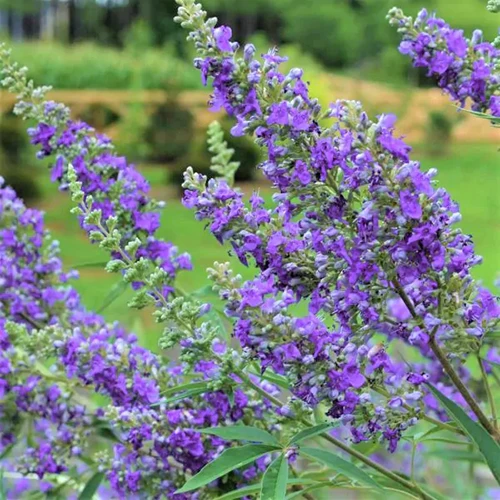
Chaste Tree
You’ll surely find these cultivars quite enjoyable, no lactose tolerance required… But if you want to stick with ol’ reliable, standard chaste trees are available in #1 and #3 containers via Nature Hills Nursery.
Blue Puffball
Looking for something a bit smaller than usual? The ’Blue Puffball’ cultivar – also sold under the name ‘PIIVAC-II’ – is perfect for growing as a small shrub, as it reaches a maximum height and spread of three to four feet.
This dark blue to purple bloomer can even fit in a pot, if you’d like!
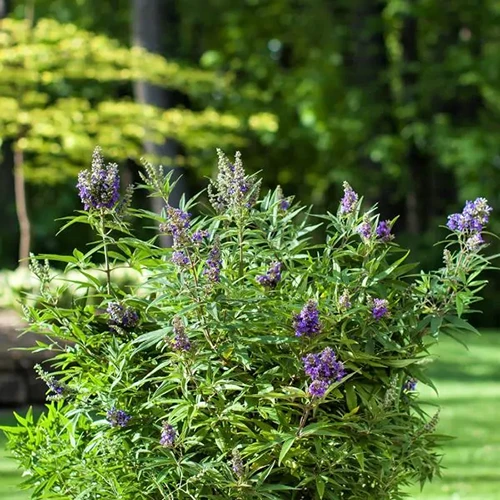
‘Blue Puffball’
As you can imagine, the delightfully rounded form of ‘Blue Puffball’ is even easier to maintain than the standard species – no need to break out the step-ladder!
It’s available in #3 containers from Nature Hills Nursery.
Pink Pinnacle
‘Pink Pinnacle,’ also known as ‘V07-SC-OP-4,’ is another small chaste tree variety, with a similarly-sized height and spread of three to four feet at maturity.
The difference between ‘Blue Puffball’ and ‘Pink Pinnacle’ is right there in the name – the flowers of ‘Pink Pinnacle’ flaunt colors that one could describe as the pinnacle of pinkness.
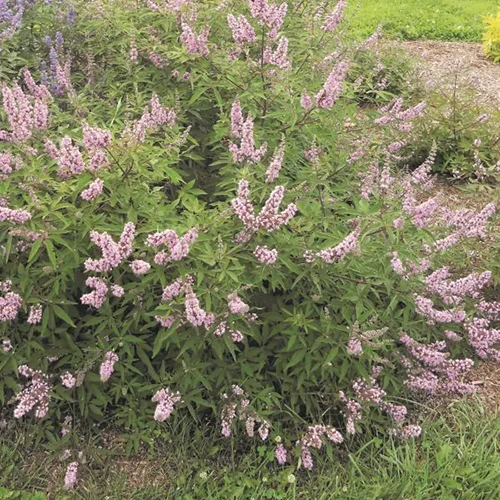
‘Pink Pinnacle’
I’ve never heard of using V. agnus-castus during a gender reveal party, but unveiling ‘Pink Pinnacle’ would be a gorgeous and aromatic way to let your loved ones know that you’ve got a little girl on the way.
‘Pink Pinnacle’ can be purchased from Nature Hills Nursery.
Shoal Creek
A 1983 introduction by Goodness Grows Nursery in Lexington, Georgia, ‘Shoal Creek’ earned its fame with its rather large clusters of blue to violet blooms, with each cluster reaching 12 to 18 inches in height!
This cultivar is larger than the others we’ve covered, with a mature height of 10 to 15 feet and a width of 15 to 20 feet.
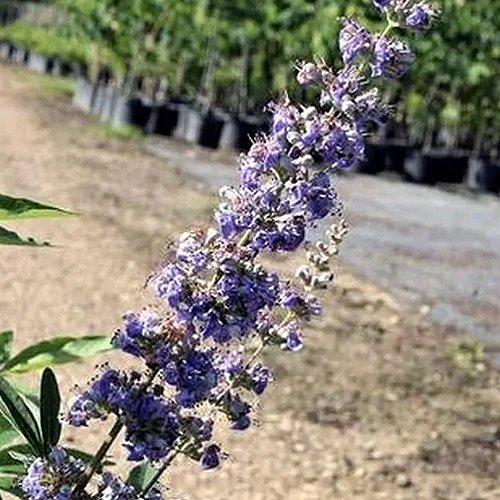
‘Shoal Creek’
Besides its looks, a notable plus of ‘Shoal Creek’ is its resistance to leaf spot. Not too shabby, eh?
For a ‘Shoal Creek’ in a quart-sized container, head on over to Nature Hills Nursery.
Managing Pests and Disease
Although V. agnus-castus plants typically aren’t bothered by pests or diseases, it doesn’t hurt to watch out for potential problems. Not deer, though – this plant is quite deer-resistant!
Insects
Since insects can vector pathogens, managing them has a delightful side benefit of limiting disease transmission.
Aphids
The translucent, soft-bodied insects known as aphids are a common enemy for the gardener.
As they infest plant surfaces, they utilize their piercing-sucking mouthparts to extract vital plant fluids.
They also excrete honeydew as they feed, which they deposit on plants and nearby surfaces.
For a plant, losing said juices can lead to local chlorosis, wilting, and/or necrosis if infestations are severe enough.
Additionally, the honeydew can attract ants and it may lead to the development of sooty mold.
Blasting these pests away with strong sprays of water or killing them with insecticidal soaps are both fine options.
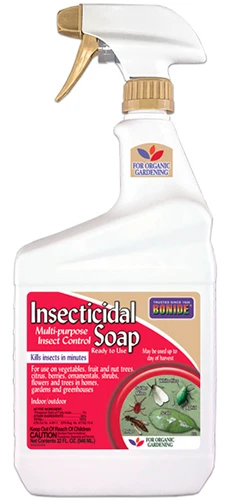
Bonide Insecticidal Soap
For the latter, might I recommend this ready-to-spray insecticidal soap from Bonide, available in 12- to 32-ounce sizes from Arbico Organics.
Learn more about how to deal with aphids in our guide.
Scale
These small, rounded insects come in either armored or soft-bodied forms, and can extract vital plant fluids with piercing-sucking mouthparts like aphids do.
As you could probably guess, the symptoms of their presence are also similar, in regards to both feeding and honeydew excretion.
To combat scale, you can scrape them off, give ’em the ol’ high-velocity hydro-treatment, or smother them with neem oil.
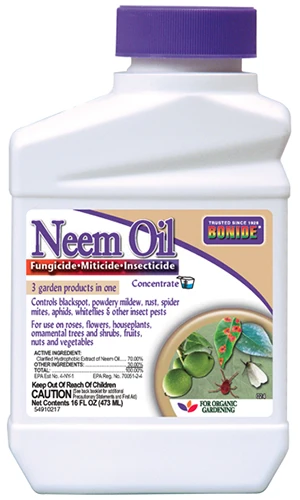
Bonide Neem Oil
Said Bonide-brand neem oil is available in quart, pint, or gallon volumes at Arbico Organics.
Check out our guide for more info about scale.
Whiteflies
Whiteflies are tiny, waxy, and soft-bodied insects with white wings and yellow-toned bodies.
As they feed on the leaves, then can leave them mottled, chlorotic, and wilted. They also excrete honeydew, which is not as sweet as it sounds, as we’ve touched on above.
Strong sprays of water and neem oil applications can control whiteflies.
Disease
Thankfully, chaste trees don’t suffer from many diseases.
But for the sake of preventing the spread of pathogens, it’s best to use clean soils, disease-free plant stock, and sanitized gardening tools.
Leaf Spot
Caused by various species of fungi or bacteria, leaf spots interrupt photosynthesis by taking up valuable real estate on the leaves with dark, circular spots of various shapes and colors.
While usually not seriously harmful to plants, they shouldn’t be ignored, as they’re not very aesthetic.
Infected tissues should be pruned away, while fallen leaves should be raked up and disposed of.
Prevention tips include adequate spacing, the avoidance of overhead watering, and utilizing fungicides before symptoms become apparent.
Root Rot
Oftentimes, a plant’s drought tolerance comes with an unfortunate side effect: an increased susceptibility to root rot.
When a plant’s root system is exposed to an excess of water – whether from too much irrigation or too little drainage – the roots begin to suffocate from a lack of oxygen, which can lead to necrosis and a deterioration of the aboveground shoots.
If a water-loving pathogen is present, the symptoms are all the more gnarly.
What got you into this mess can get you out of it, too: water. Proper irrigation and drainage both prevents root rot and manages its symptoms.
But if the plant is too far gone, removing it and learning for next time is all you can do.
Best Uses
First and foremost, the striking form, flowers, and foliage of a chaste tree make it a gorgeous specimen plant – either in shrub or tree form – and one that attracts pollinators wherever you put it.
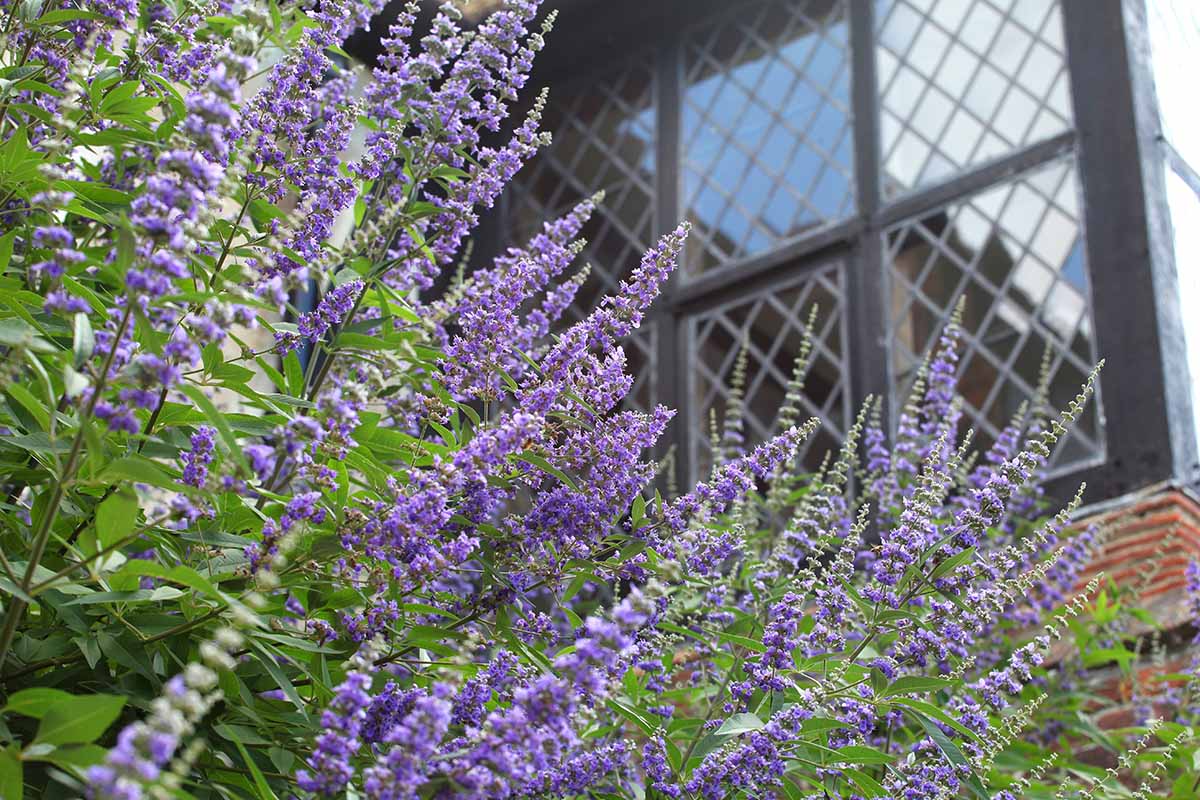
Cottage and butterfly gardens, areas along borders, and locations up against building foundations all make for fantastic placement options.
Heck, you can even put small cultivars in a pot.
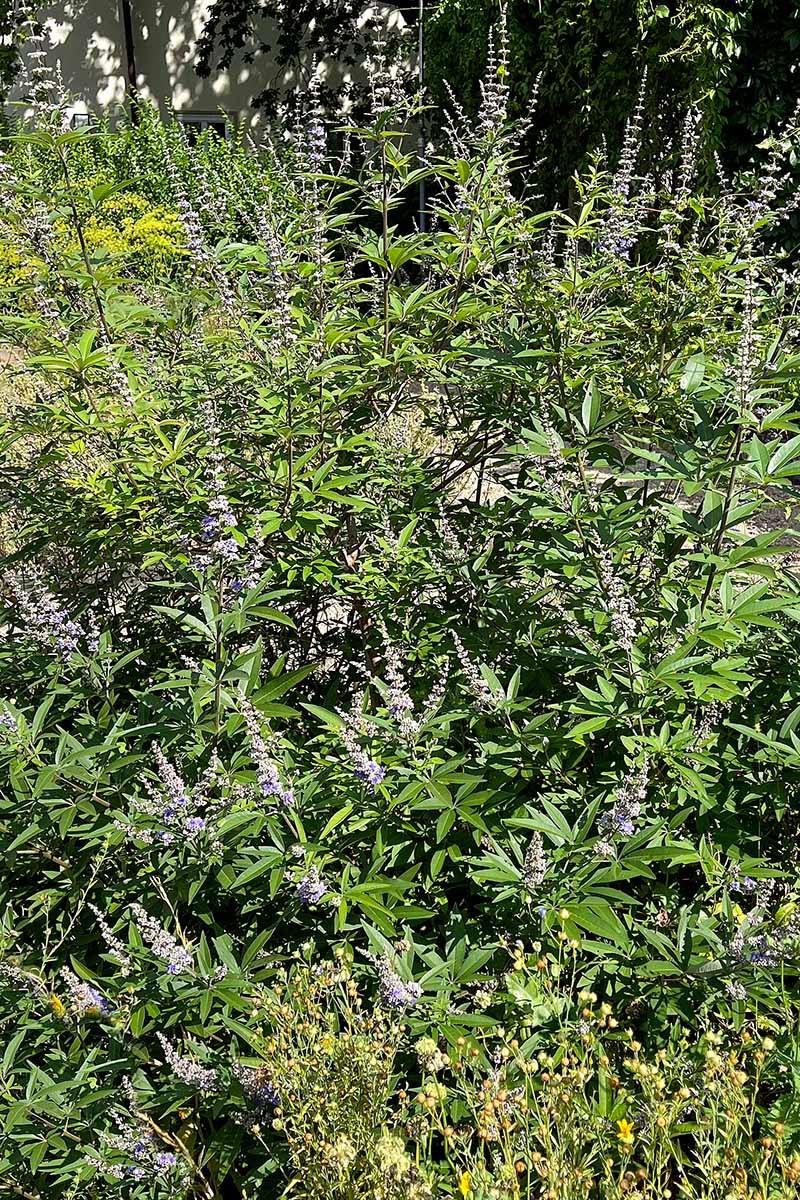
The chaste tree is sometimes referred to as the “lilac of the south” because its beautiful flower spikes resemble those of the lilac, which isn’t as tolerant of the heat as the V. agnus-castus.
So if you’re looking for a lilac-esque planting for a hot and dry garden, the chaste tree is perfect.
Quick Reference Growing Guide
| Plant Type: | Deciduous woody shrub or small tree | Flower/Foliage Color: | Blue, pink, purple, white/grayish-green |
| Native to: | Southern Europe and western Asia | Water Needs: | Low |
| Hardiness (USDA Zones): | 6-9 | Maintenance: | Low |
| Bloom Time: | Summer | Tolerance: | Deer, drought, heat, salt, various soil types |
| Exposure: | Full sun | Soil Type: | Loose, friable |
| Time to Maturity: | Less than 5 years | Soil pH: | 6.0-7.0 |
| Spacing: | Width of mature spread | Soil Drainage: | Well-draining |
| Planting Depth: | Just below soil surface (seeds), depth of root system (transplants) | Attracts: | Bees, birds, butterflies, other pollinating insects |
| Height: | 8-20 feet | Uses: | Butterfly gardens, cottage gardens, foundation plantings, shrub borders, specimen plantings |
| Spread: | 5-20 feet | Family: | Lamiaceae |
| Growth Rate: | Fast | Genus: | Vitex |
| Common Pests and Disease: | Aphids, scale, whiteflies; leaf spot, root rot | Species: | Agnus-castus |
Don’t Abstain from the Chaste Tree
Temperance and self-control come in handy in many aspects of life… But when it comes to planting a chaste tree, you only hurt yourself by waiting.
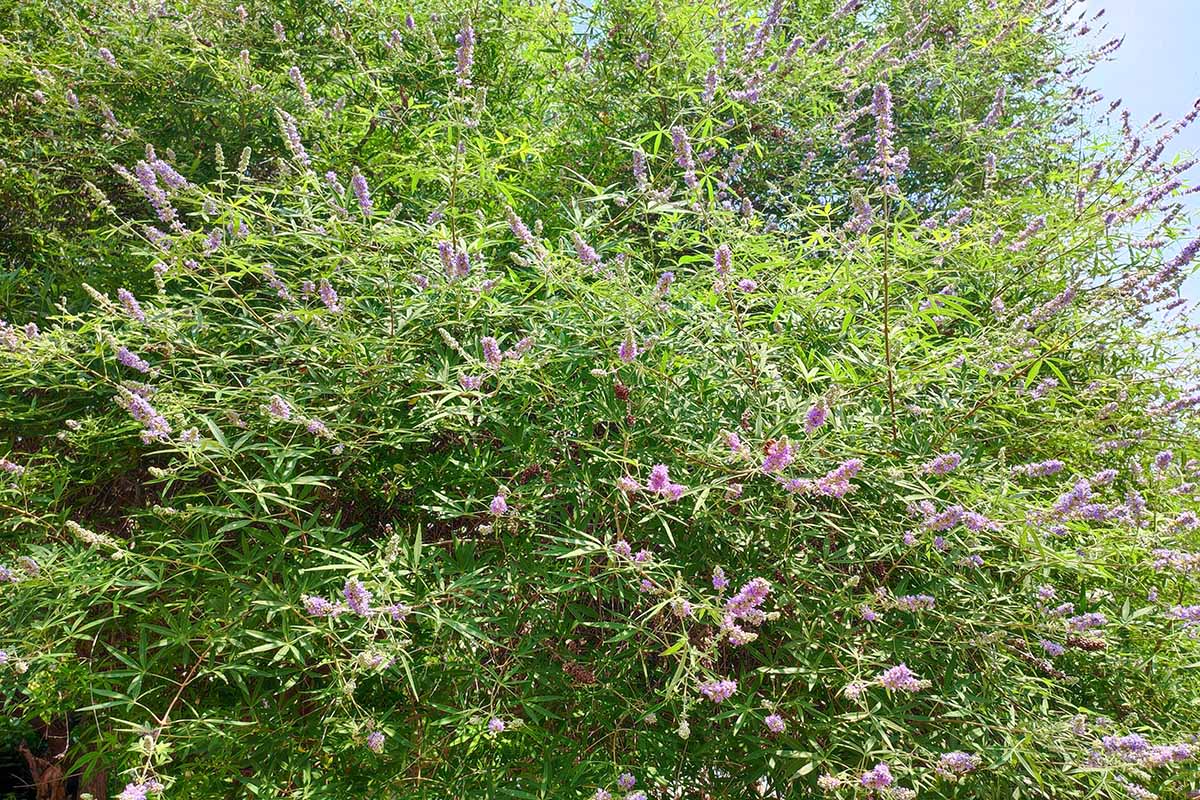
Drought tolerance, pollinator attraction, all-around aesthetics – V. agnus-castus has it all. And you can have it all, too, by putting one in your landscape. So what are you waiting for?
For anyone with questions, declarations, exclamations, and/or imperatives in regards to the chaste tree, head on down to the comments section!
Trying to attract more pollinators with woody shrubs? These plants will get the job done beautifully:

